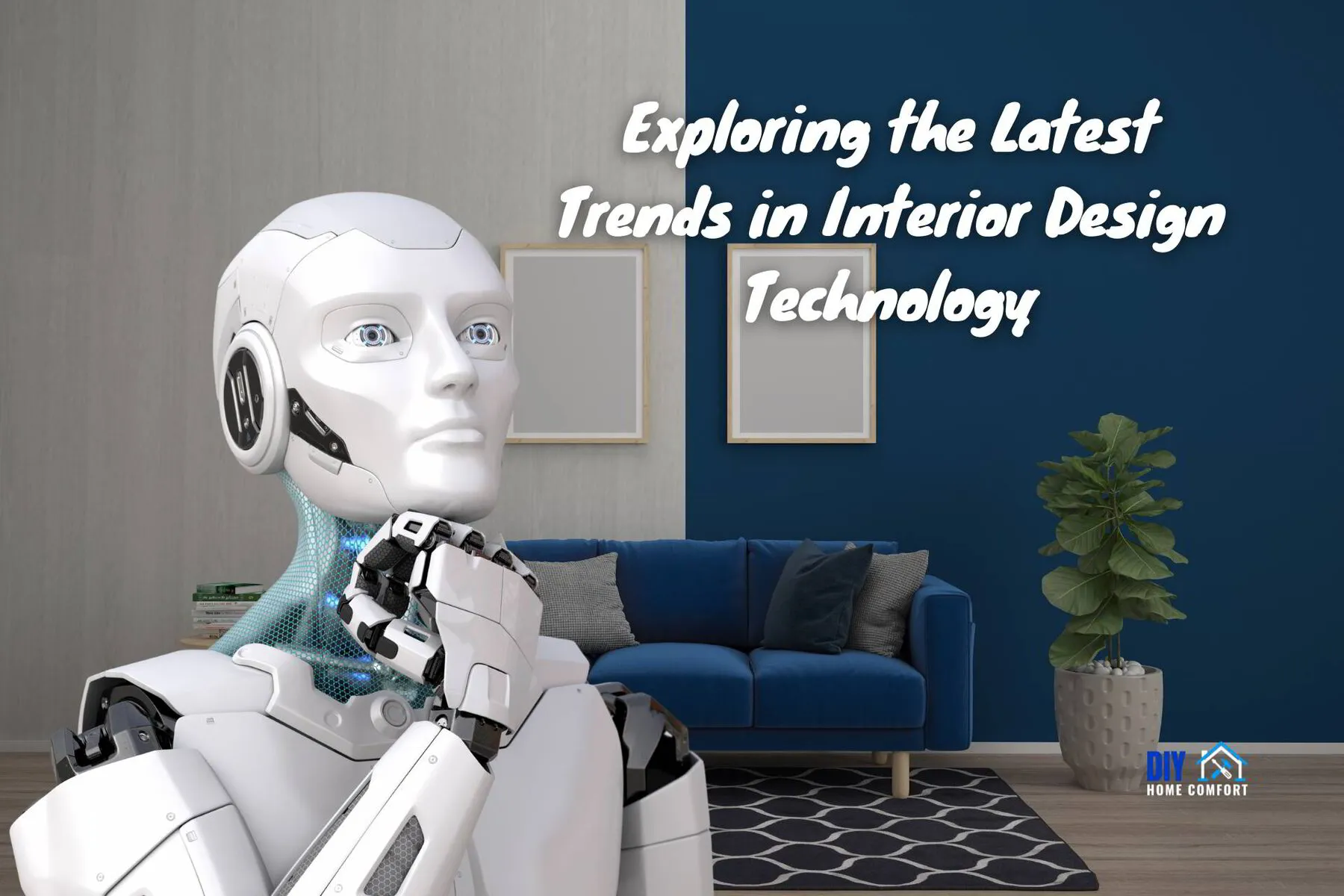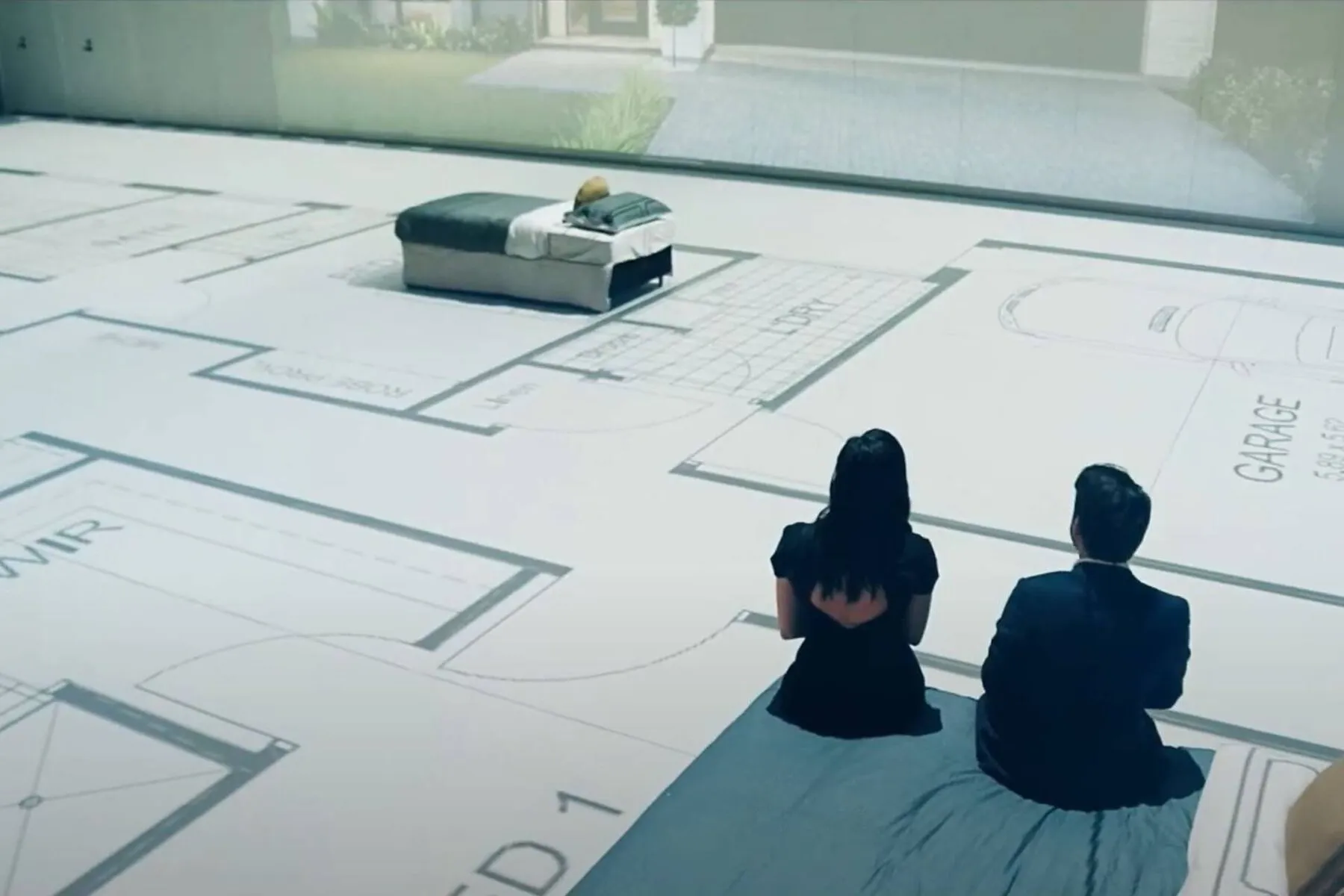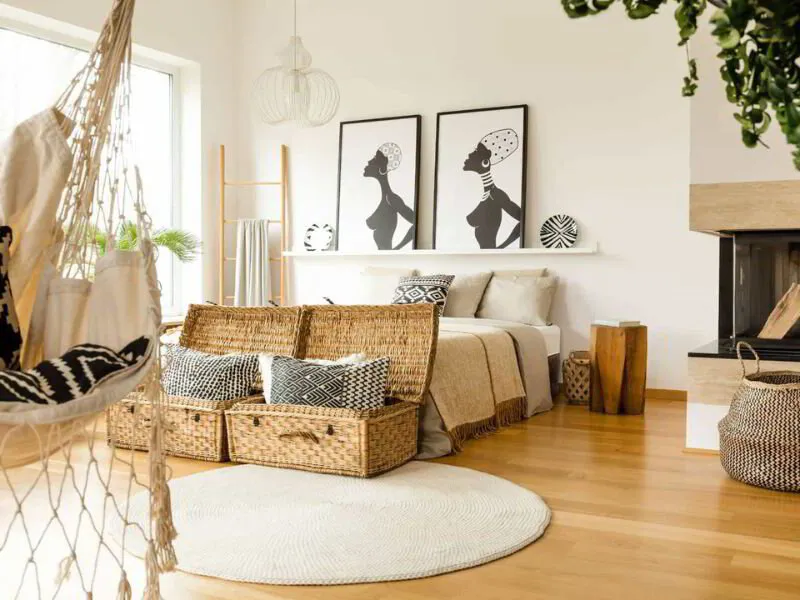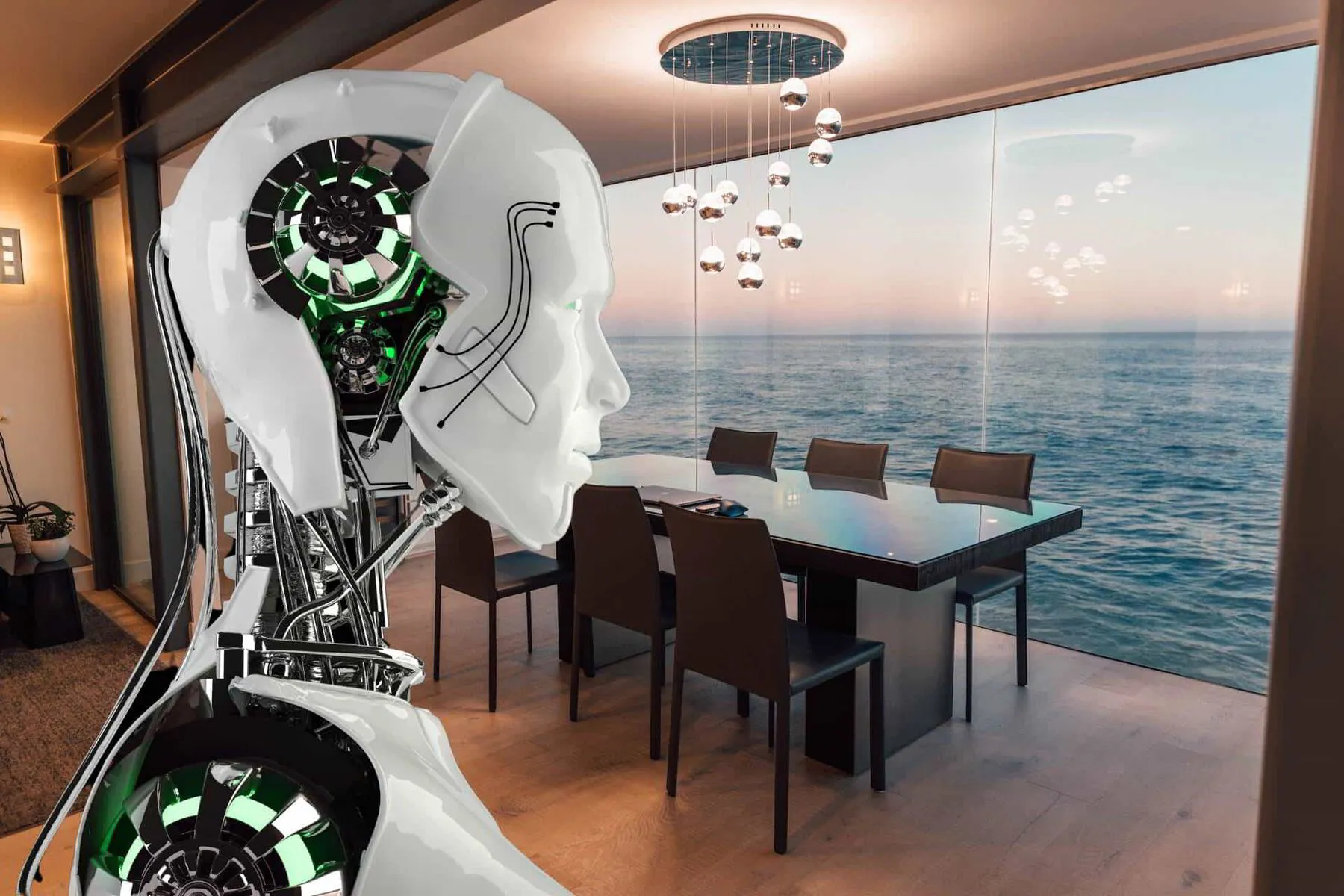As the world becomes increasingly dependent on technology, it's no surprise that the ways in which we design our living spaces are also changing.
To keep up with the latest developments in interior design technology, it's essential to stay updated with the latest trends.
From virtual and augmented reality to sustainable design solutions and 3D printing, the possibilities are endless.
Let's dive into some of the most promising trends in interior design technology today.
📘 Key Takeaways
- Virtual and augmented reality technologies revolutionize interior design, offering immersive experiences and real-time design changes.
- Smart home integration, including voice-activated assistants and energy-efficient systems, enhances convenience and automation in modern homes.
- Sustainable design solutions, such as biophilic elements and energy-efficient techniques, prioritize environmental impact and create authentic spaces.
- 3D printing in interior design allows for unparalleled customization, enabling designers to craft unique furniture and decor tailored to individual preferences.
- As technology advances, interior designers leverage these tools to create innovative, efficient, personalized spaces that cater to evolving client needs.
The Rise of Virtual and Augmented Reality in Interior Design
Virtual and augmented reality are revolutionizing the way interior design is done.
These technologies allow interior designers to create immersive and interactive experiences that help clients visualize what their space will look like before construction or remodeling occurs.
The use of VR and AR technologies in interior design is rising, and it is easy to see why.
Virtual Reality Showrooms and Walkthroughs
Virtual reality showrooms and walkthroughs are becoming more prevalent in the interior design industry.
By wearing a VR headset, clients can experience a virtual tour of their new space and make design changes in real time.
These showrooms and walkthroughs allow clients to explore different design options from the comfort of their own homes, making the design process more convenient and efficient.
This technology also allows for efficient and effective communication between the interior designer and the client, ensuring the client's vision is realized.
Virtual reality showrooms and walkthroughs are also helpful for designers and businesses, as they can showcase their work to potential clients and investors.
This technology allows designers to create a more immersive and engaging experience for their audience, which can help them stand out in a crowded market.
Augmented Reality Home Walkthrough by Rivergum Homes
Augmented Reality Apps for Space Planning
Augmented reality is another technology that is making waves in interior design.
AR apps allow designers to overlay digital representations of objects and furniture onto real-life spaces through a smartphone or tablet.
This technology can help designers explore and test different design options, enabling them to make changes to the space more efficiently and cost-effectively.
AR apps are also helpful for clients and homeowners, as they can use these apps to visualize their new space and make design decisions.
These apps can help clients to see how different furniture and decor options will look in their space before they make any purchases, saving them time and money in the long run.
The Future of VR and AR in Interior Design
The potential of both augmented and virtual reality in interior design is enormous.
As technology develops, we can expect more designers to use these tools to create immersive and interactive experiences that engage and inform clients.
The possibilities for customization and collaboration are endless with these technologies, ultimately leading to more satisfied clients and innovative design solutions.
In the future, we may see even more advanced VR and AR technologies used in interior design.
For example, interior designers may be able to create completely customizable virtual spaces, allowing clients to change the layout and design of their room in real time.
We may also see the integration of AI technology, which could help designers to create more personalized and tailored designs for their clients.
Overall, VR and AR technologies in interior design are transforming the interior design industry.
These technologies make the design process more efficient, convenient, and engaging for designers and clients.
As technology develops, we can expect to see even more innovative ideas and exciting applications of VR and AR in interior design.
Smart Home Integration in Modern Interior Design
Smart home integration is becoming increasingly crucial in interior design as we strive for more convenience and home automation in our daily lives.
Smart homes are no longer a thing of the future but rather a present reality.
With technological advancements, integrating smart home devices in interior design has become a seamless process, making our lives easier and more comfortable.
Voice-Activated Home Assistants
Voice-activated home assistants, such as Amazon's Alexa or Google Home Assistant, enable users to control various aspects of their home, including lighting, temperature, and appliances, with voice commands.
This technology has revolutionized the way we interact with our homes.
Imagine waking up in the morning and asking Alexa to turn on the lights, play music, and start your coffee maker without leaving your bed.
In smart home designs, these devices can be integrated to provide convenience and create a seamless and cohesive design.
For instance, the home assistant can be placed in a central location and designed to match the room's overall aesthetic.
Energy-Efficient Lighting and Climate Control
Energy-efficient lighting and climate control systems are becoming more popular in modern interior design.
These systems can help to reduce energy consumption, lower costs, and reduce a home's carbon footprint.
They can also create specific moods and atmospheres within a space, leading to a more comfortable and personalized living environment.
For instance, smart lighting systems can be programmed to adjust the color temperature and brightness of the lights based on the time of day, creating a warm and cozy atmosphere in the evenings and a bright and energizing environment in the mornings.
Similarly, smart climate control systems can be programmed to adjust the room's temperature based on the time of day, ensuring that the room is always at the perfect temperature.
Smart Furniture and Appliances
Smart furniture and appliances are also a growing trend in interior design.
From beds that can adjust to individual sleep preferences to refrigerators that can create grocery lists and order groceries, these devices offer convenience and improve the functionality of a home.
They can also be designed to match the overall aesthetic of a space, creating a cohesive and stylish design.
For instance, a smart bed can be designed to match the room's overall color scheme, while a smart refrigerator can blend seamlessly with the kitchen cabinets.
In conclusion, smart home integration is a trend that is here to stay.
With the increasing popularity of smart home devices, interior designers are finding new and innovative ways to integrate them into their designs.
From voice-activated home assistants, smart speakers, and smart locks to energy-efficient lighting and climate control systems to smart furniture and appliances, the possibilities are endless.
By incorporating smart home devices into their designs, interior designers are creating functional but also stylish, and comfortable homes.
Sustainable and Eco-Friendly Design Solutions
As more people become aware of our impact on the environment, sustainable and eco-friendly design solutions are gaining popularity in interior design.
Not only do these solutions help to reduce our carbon footprint, but they can also create a more natural and authentic feel within a space.
When it comes to sustainable design, there are many options to consider.
From biophilic design elements to reclaimed and recycled materials, there are numerous ways to incorporate sustainable practices into your interior design project.
Biophilic Design Elements
Biophilic design elements, such as indoor plants and natural materials, can improve air quality and create a sense of calm and well-being within a space.
These elements can be incorporated into various interiors and design styles, creating a more natural and authentic feel.
For example, incorporating a living wall into your design can add a beautiful and unique element to your space and help purify the air and improve overall air quality.
Additionally, using natural materials such as wood, stone, and bamboo can add warmth and texture to your design while reducing synthetic materials.
Reclaimed and Recycled Materials
Reclaimed and recycled materials are also being used more frequently in interior design.
Not only are these materials sustainable, but they can also add character and uniqueness to a space.
For instance, repurposed wood can create a stunning feature wall or unique furniture piece.
Similarly, reused metal can be incorporated into lighting fixtures or decorative accents, adding an industrial and edgy feel to your design.
Energy-Efficient Building Techniques
Energy-efficient building management techniques, such as passive solar design, can also be incorporated into interior design.
These techniques can help to reduce energy consumption by utilizing natural light and ventilation, ultimately leading to greater energy efficiency and cost savings.
For example, incorporating large windows into your interior design can provide natural light, help regulate temperature, and reduce the need for artificial lighting.
Additionally, using shading devices such as blinds or curtains can help to control the amount of sunlight and heat that enters your space.
Overall, sustainable and eco-friendly design solutions are not only beneficial for the environment but can also create a more natural and authentic feel within a space.
By incorporating biophilic design elements, reclaimed and recycled materials, and energy-efficient building techniques, you can create a stunning and sustainable interior design that is beautiful and functional.
The Impact of 3D Printing on Interior Design
3D printing is a cutting-edge technology that has made significant strides in various fields, including interior design.
This technology is changing how designers approach design, offering greater flexibility, personalization, and efficiency in interior design.
3D printing allows designers to create customized furniture and decor pieces unique to each client.
This technology offers greater flexibility in design, allowing an interior designer to create complex and intricate designs that were previously impossible to achieve with traditional manufacturing methods.
With 3D printing, designers can easily create one-of-a-kind pieces that reflect the client's personality and preferences, making the space more personalized and dynamic.
Customizable Furniture and Decor
3D printing is a game-changer in the world of customizable furniture and decor.
This technology allows designers to create pieces tailored to the client's specific needs and preferences.
For example, an interior designer can create a chair ideally suited to a client's body shape and size, ensuring maximum comfort and support.
This level of customization is impossible to achieve with traditional manufacturing methods, making 3D printing a valuable tool for designers who want to create unique and personalized interior spaces.
Rapid Prototyping for Designers
Another benefit of 3D printing is rapid prototyping.
Designers can use 3D printing to quickly and accurately prototype their designs.
This allows designers to test and refine their designs in real time, making the design process more efficient and accurate.
With 3D printing, designers can easily change their designs and create new prototypes, saving time and resources in the design process.
The Future of 3D Printing in Interior Design
The potential of 3D printing in interior design is vast.
As technological advancements continue to occur, we can expect more designers to use this tool to create innovative and unique design solutions.
The possibilities for customization and creativity are endless, leading to more personalized and dynamic living spaces.
As technological advancements continue to shape and transform the field of interior design, interior designers need to stay up to date with the latest trends and developments.
Virtual and augmented reality, smart home integration, sustainable design solutions, and 3D printing are just some of the exciting technologies changing how we design and experience our interior spaces.
By incorporating these technologies into their designs, designers can create more innovative, efficient, and personalized spaces that meet the needs and preferences of their clients.
3D printing is a game-changer for interior design, offering greater flexibility, personalization, and efficiency in the design process.
With this technology, designers can create unique, personalized spaces that reflect clients' personalities and preferences.
Final Thoughts on the Future of Interior Design Technology
Interior design technology is making a big impact on our lives.
These innovative trends transform how we design and decorate our homes, creating digital environments that capture the essence of personality, style, and comfort.
Whether you’re seeking out the latest tech for your next remodel or looking for a few fresh ideas to add some spark to your existing setup, keep exploring what modern interior design has to offer – there’s no doubt that technology will continue to make an indelible mark on this ever-evolving field.
And if you want to learn more about interior design technology and its exciting possibilities, don't forget to check out the rest of our interior design blog!
Thanks for reading!
📘 Related Reading: The Ultimate Glossary of Interior Design Terms
Lara Harding
Lara is a supporting author @ DIY Home Comfort. She's an experienced interior designer and decorator and a full-time mom. You can find out more about her here.






